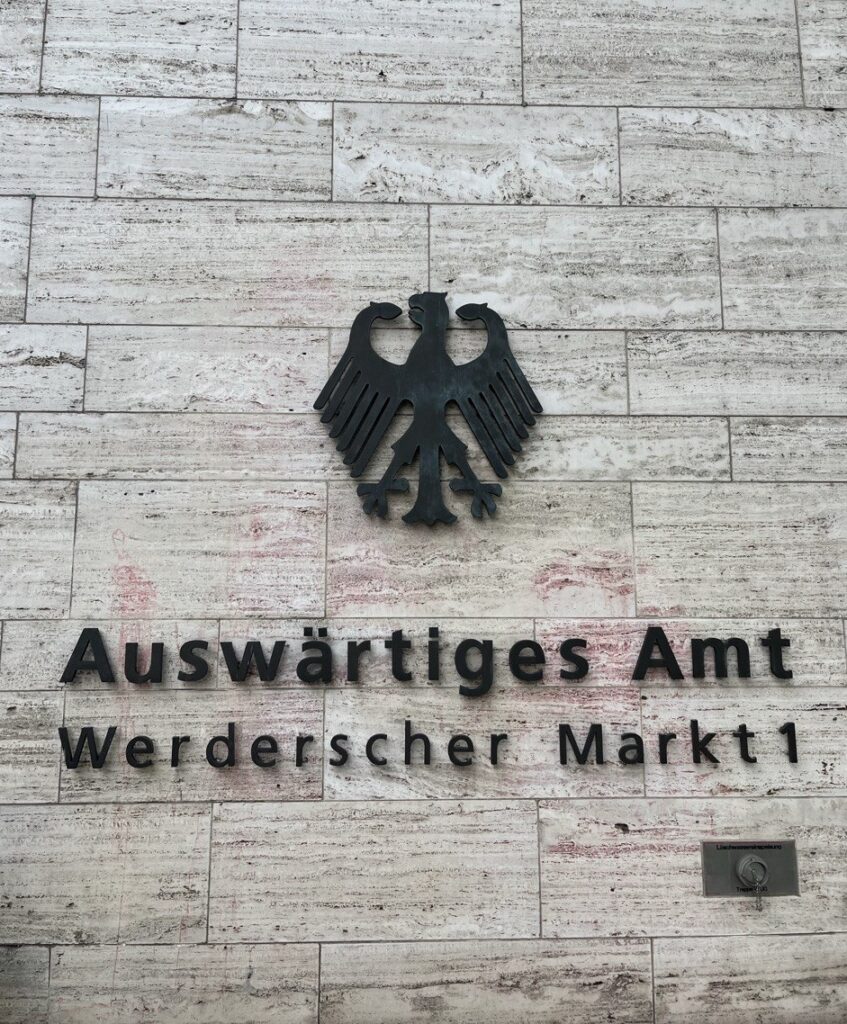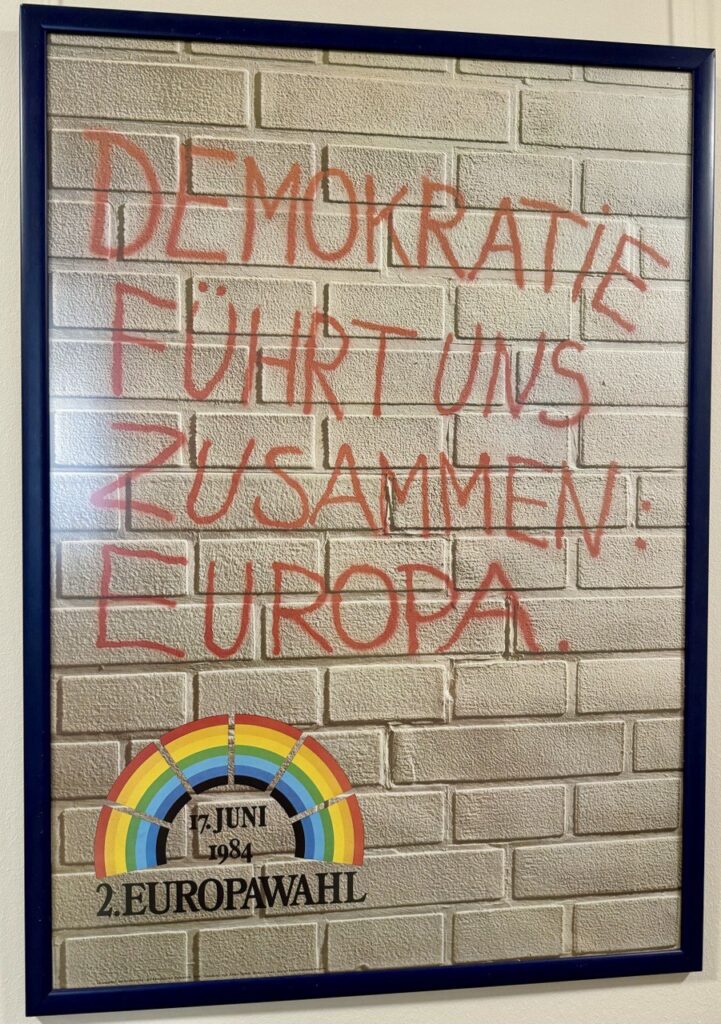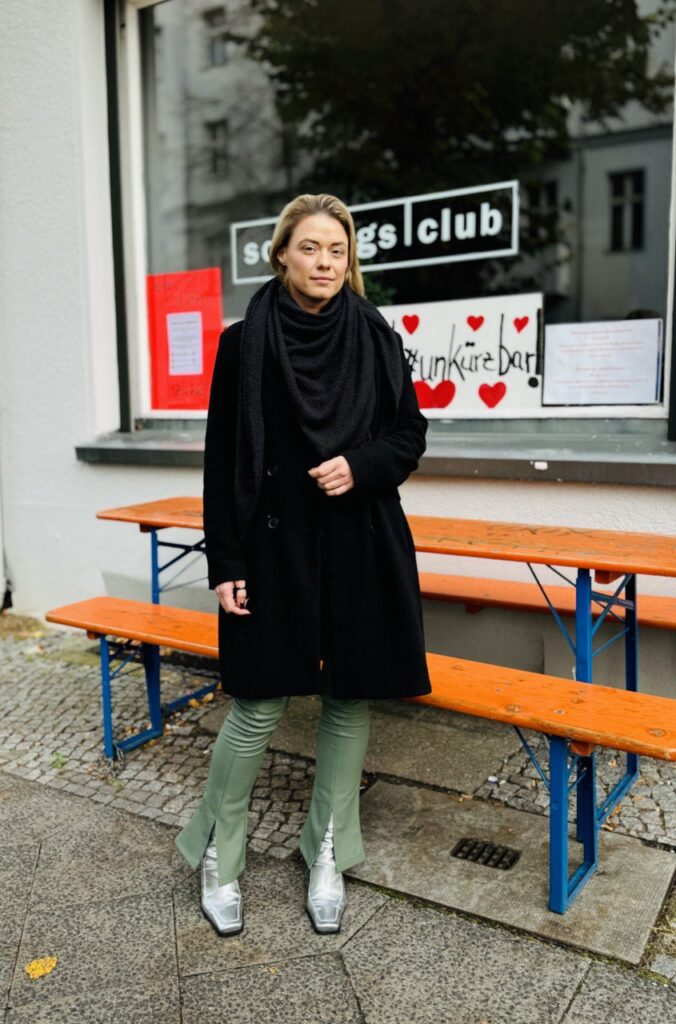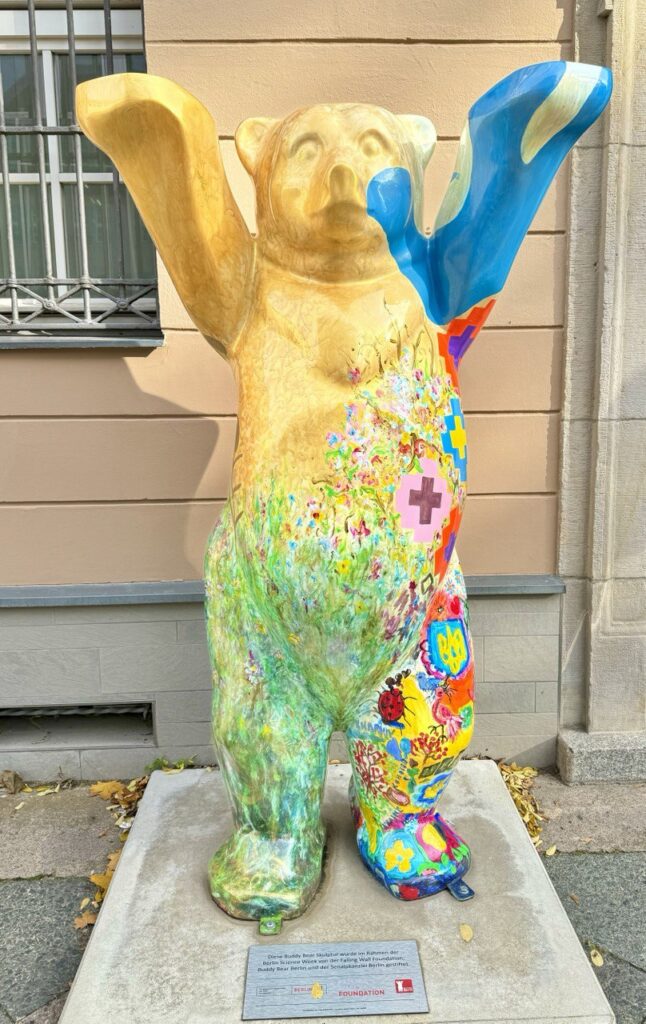When international organizations talk about hate speech, they are increasingly using the word “weapon.” The United Nations explicitly warns: hate speech combined with disinformation leads to stigmatization and discrimination, and can escalate into large-scale violence. The Council of Europe calls hate speech “a serious threat to human rights, the rule of law, and democracy,” which, in its extreme forms, fuels hate crimes. Thus, this is no longer about a “bad joke” or a “controversial opinion,” but about a security factor.
russia’s full-scale invasion of Ukraine triggered the largest migration crisis in Europe since World War II. According to estimates by the UNHCR, as of February 2025, about 6.9 million Ukrainian women and men are registered as refugees abroad, and another 3.7 million remain internally displaced within the country. Among them are thousands of LGBTIQ+ people for whom the war compounds already existing discrimination.
Ukraine’s public sphere—media, politics, social networks—was saturated with anti-LGBTIQ+ rhetoric even before the war. A study of Ukrainian online media showed that among materials dedicated to LGBTIQ+ topics, a significant share contained hate speech or stigmatization. Despite the fact that by 2024, 70.4% of Ukrainians believed that LGBTIQ+ people should have the same rights as other citizens, hate speech in the public sphere has not disappeared. In its 2024–2025 review, ILGA-Europe notes that the war has exacerbated old problems—discrimination, prejudice, the lack of legal recognition of partnerships, and insufficient protection from hate crimes.

For LGBTIQ+ Ukrainian migrants, hate speech works in a “double exposure.” First, they face the homo- and transphobia that has followed them from home. Second, they face xenophobia and anti-migrant sentiment in host countries. Human rights organizations and experts speak of “double discrimination”: LGBTIQ+ migrants face bias both as people with an unwanted sexual or gender identity and as newcomers—“outsiders.”
Alla (name changed), a 49-year-old Ukrainian woman and mother of five, two of whom identify as part of the LGBTIQ+ community, describes how abstract numbers translate into the experience of one family. After the invasion began, they fled Ukraine and ended up in Poland. Alla recalls how her children “couldn’t eat or drink and were completely exhausted” due to war trauma. But in the transit country, the family encountered a new circle of aggression: bullying at school, as “Ukrainians” and as “queer teens”; assaults during a local Pride event, when a stranger tried to tear a rainbow flag from the children and force them “out.” This incident occurred in Poland, a country where the level of LGBTIQ+ protection is significantly lower than in Germany. But it illustrates a general mechanism: hate speech, reinforced by war and migration, actively follows Ukrainian LGBTIQ+ people across countries. And the challenges remain even in more tolerant European and global states.
The full-scale war has changed not only borders and migration routes but also the nature of language itself. It has turned hate speech into an effective tool of conflict—a way to influence social moods, manipulate fears, and shape the image of the “other.” In this environment, Ukrainian LGBTIQ+ migrants find themselves in a zone of heightened risk, where war and discrimination overlap.
Disinformation acts as a catalyst in this process. Fact-checking teams at international media outlets like Deutsche Welle (DW) document that modern disinformation campaigns no longer aim to convince society of one specific fake—they pursue another goal. They create a situation in which “no one tells the truth,” in which trust in media, experts, and state institutions collapses, and society can no longer distinguish fact from manipulation. In such an atmosphere, hate speech does not simply grow—it becomes legitimized, a socially acceptable way to “express oneself,” and aggression begins to be perceived as a normal reaction.
For years, russian propaganda campaigns have built the image of LGBTIQ+ people as a threat. After February 24, this narrative was adapted to the new migration reality: anti-LGBTIQ+ and anti-Ukrainian messages began to work in tandem, fueling distrust toward Ukrainian migrants in EU countries while simultaneously discrediting Ukraine—either as “not European enough” or “too liberal.” These narratives are systematically documented by the East StratCom Task Force of the European External Action Service, which records hundreds of disinformation attacks in which LGBTIQ+ topics are used as a “divide and rule” tool against Ukrainian displaced persons.

UNHCR and ILGA-Europe describe this phenomenon as “double vulnerability”: war makes a person a migrant, while homo- or transphobia makes them invisible. Many LGBTIQ+ Ukrainians are forced to hide their identity so as not to lose a place in a shelter, avoid biased medical personnel, or escape becoming a target within their own diaspora communities. UNHCR reports for 2023–2024 emphasize that cases of discrimination based on SOGIESC often go undocumented precisely because people fear reporting incidents and distrust institutions.
The situation in host countries for Ukrainian migrants is also ambiguous. Even where legislative standards are high, public sentiment can create a dangerous backdrop. Research shows that even stable democracies are vulnerable to information campaigns. According to DW, in Germany, for example, the share of people who believed that “NATO provoked russia” rose from 29% to 40% in just a few months after the full-scale invasion—a sign of how effectively systemic narratives work and how quickly hate speech can spread in such a context.
At the same time, in Ukraine, political groups deliberately use antagonistic messages: attacks on a civil partnership bill, campaigns about a “threat to traditional values,” and manipulative claims about “gender ideology.” These messages serve the same function as external disinformation: they normalize hate speech, making it politically and socially acceptable.
All of this creates a clear and dangerous pattern:
hate speech → political decisions → discrimination or violence.
Hate speech constructs the image of the “undesirable” migrant, shapes social tolerance for unequal treatment, legitimizes aggression, and ultimately determines whether a person has access to housing, healthcare, education, and integration services. It is not merely improper rhetoric—it is a technology with direct material consequences for the lives of Ukrainian LGBTIQ+ migrants in Europe.
From afar, Germany looks like an “ideal picture” for LGBTIQ+ people: strong rule of law, clear criminal norms against hate speech, and special programs for refugees and migrants. But behind this picture lies a complex system that offers both real protection and tangible gaps.

At the level of criminal law, the core of Germany’s response to hate speech is Article 130 of the Criminal Code (Volksverhetzung), which criminalizes “incitement to hatred” against groups of people based on nationality, ethnicity, religion, as well as sexual orientation and gender identity. The penalty can be up to three years in prison. The OECD, in its 2023 report on LGBTIQ+ inclusion in Germany, stresses that Germany is among the countries where both hate crimes and hate speech based on sexual orientation and gender identity are explicitly criminalized.
The second important level is online platforms. In 2017, Germany adopted the Network Enforcement Act (NetzDG), which obliges large social networks (with more than 2 million users in Germany) to remove “obviously illegal” content, including hate speech, within 24 hours of a complaint, and other illegal content within seven days. Failure to comply can result in fines of up to €50 million. While the law is criticized for the risk of “over-blocking,” it set a precedent: the state not only punishes hate speech after the fact but also compels platforms to react quickly when dealing with threats, incitement to violence, or Nazi propaganda. This stands in contrast to Ukraine, where there is nothing comparable to NetzDG and platform regulation is limited to general legal norms and platforms’ often opaque internal rules.
Germany records hate crimes as part of the broader category of “politically motivated crimes,” with a separate marker for crimes targeting LGBTIQ+ people. This is acknowledged, for example, by the OSCE in its review of Germany’s national mechanisms for responding to hate crimes.
Official figures from recent years show that the problem is not disappearing—it is growing. The Federal Criminal Police Office (BKA) reported that in 2023, police registered 17,007 hate crimes, of which 1,785 targeted LGBTIQ+ people (marked as LSBTIQ*). This is about 50% more than the previous year, and around 18% involved physical violence. The analytical resource DataPulse, using the same BKA data, clarifies: in 2023, Germany recorded 1,499 offenses related to sexual orientation and 854 related to gender diversity, with 87% of victims not reporting to police due to shame or distrust. So, despite strong laws, the reality is a sharp rise in registered hate crimes, while an even larger share remains invisible. For Ukrainian LGBTIQ+ migrants, this sends a dual signal: formally, you are better protected than at home, but you may end up in a society where hatred is also radicalizing and increasingly visible.
Another layer is the policy toward LGBTIQ+ refugees and migrants. The federal government’s Action Plan “Queer leben” explicitly includes LGBTIQ+ refugees as one of its target groups: it provides funding for research on their situation, support for specialized shelters, and training for staff involved in asylum procedures. Since 2017–2018, the Ministry of Migration and Integration has funded the Queer Refugees Deutschland project led by the LGBTIQ+ association LSVD. This project provides guidance to LGBTIQ+ refugees, helps them navigate the asylum system, and supports organizations working with them. In Berlin, an additional “layer of protection” comes from local organizations (such as Kwitne Queer), which assist with housing searches, lawyers, LGBTIQ+-sensitive doctors and therapists, and navigation of social benefits and language courses.

This is the reality Ukrainian LGBTIQ+ migrants enter: legislation where hate speech is explicitly prohibited; platform regulation requiring social networks to act; shelters and counseling centers that declare sensitivity to sexual orientation, gender identity and expression, and sex characteristics (SOGIESC). In this sense, Germany truly offers an infrastructure that does not yet exist in Ukraine.
In contrast, Ukraine still lacks comprehensive criminalization of hate crimes based on sexual orientation and gender identity: the adoption of key draft laws—5488 (on combating hate crimes) and 9103 (on registered partnerships)—is still blocked by parliament, as noted by ILGA-Europe and Ukrainian human rights organizations.
The new draft law No. 13597, introduced by a group of MPs led by Olena Shuliak and aimed at updating anti-discrimination and criminal legislation (including explicitly adding sexual orientation and gender identity to the list of protected characteristics and changing the status of Article 161 of Ukraine’s Criminal Code from “private prosecution” to allowing proceedings to begin ex officio), remains only an initiative. In Ukraine, most necessary tools exist in the form of legislative drafts or roadmaps, not functioning laws.
European institutions highlight this openly. The European Parliament, in its 2023–2024 enlargement package, “welcomes” Ukrainian legislative initiatives 5488 and 9103 but calls for their “swift adoption” to meet European Court of Human Rights standards. The European Commission’s 2024 report on Ukraine emphasizes that progress in LGBTIQ+ legal protection is blocked specifically because these key legislative changes have stalled.
Thus, the picture is as follows: Germany offers a formally strong model—criminal prohibition of hate speech, a special social media law, government action plans for LGBTIQ+ migrants, specialized counseling, and shelters. Yet statistics show rising hate crimes, and the experiences of Ukrainian queer migrants reveal a gap between rules on paper and the system’s actual sensitivity.
This is why Germany’s experience should be seen not as a “ready-made recipe,” but as a set of tools Ukraine can adapt—understanding both their effectiveness and their limitations. And these tools become truly visible only when viewed through the lived experiences of real people—those who feel daily how the protection system works (or doesn’t work).

After analyzing laws and mechanisms, the main question remains: what does all of this look like in real life? What lies behind dry formulations about integration, access to services, and safety? Here begins another truth—vivid, complex, and sometimes painful. Because Ukrainian migrants, especially LGBTIQ+ people, exist at the intersection of multiple vulnerabilities, understanding this reality is impossible without their own voices.
Anton (name changed), a member of the Ukrainian LGBTIQ+ community and a former soldier who moved to Berlin after leaving the army, tells his story calmly and rationally, yet it conveys a clear sense of how Europe has changed—and how we have changed. He says he personally has not faced hate speech in Ukraine or Germany, but sees how the roots of the phenomenon differ in the two countries. In Ukraine, he says, hate speech comes mainly from grassroots groups—far-right movements, certain religious communities—and has never been legitimate at the state level: “In Ukraine, it’s hard to imagine a minister standing up and saying openly homophobic things.” In Germany, he says, something else is happening: hate speech becomes part of the political process itself. What would have been impossible ten years ago is now spoken in parliaments: “About ‘Islamization,’ about ‘the blood of the nation,’ about ‘threats to children’—and these are no longer marginal people, no one removes them from the floor, it’s part of the discourse.”
Anton sharply describes the logic behind each wave of hatred: hate speech brings political gains. That is why it multiplies—because it works. “It spins in a spiral,” he says, explaining how modern social networks amplify it: algorithms reward emotion, aggression, shock value. “For every hundred views of your rational message, there will be ten million views of a fabrication,” he concludes, adding that winning this game is impossible without systemic changes in politics, media, and platform regulation.
Anton also explains what makes societies vulnerable: prolonged periods of stability. “Years of peaceful life made people in Germany believe it would last forever. That history had ended. And we in Ukraine thought so too until 2013.” This illusion of stability, he says, creates fertile ground for any disinformation—including that which turns migrants and LGBTIQ+ people into a “threat.”
His accounts of the Polish–German border sound like a chronicle of reality shifting: six months ago—just a bridge; now—men in vests, “stop islamisierung” flags, neo-Nazi youths, police, army. “It looks like sniper points will appear soon,” he says. And he adds absurd but effective fakes from Polish social media claiming that German police “drop illegal migrants in Polish forests.” “The absurdity is extreme, yet people believe it.” Such absurdities shape the mood in which hate speech flourishes.
But behind the analysis is something even more striking: how different systems distribute resources and who receives them. Ukrainians in Germany, Anton says, often fall into support structures built historically for Eastern European migrants in general—russians, Belarusians, other post-Soviet groups. And to Germany, these communities look like one generalized “russian-speaking group.” He has repeatedly seen people referred to consultants or doctors who hold anti-Ukrainian, imperial, or outdated views. For someone who lost their home, family, and normal life because of russia, this supposed “unity” is not only traumatic—it is a secondary blow.

Loki von Dorn, co-founder of Kwitne Queer — the first officially registered organization of Ukrainian LGBTIQ+ refugees in Germany—continues where Anton stops. His stories reveal what happens when “the system works as it works,” and a person doesn’t fit its standard frameworks. He tells of a 19-year-old trans* girl from Ukraine who repeatedly sought help in German clinics as her mental health rapidly worsened. She was kept for a day or two and released. “She begged for help,” Loki says. “But if you are too complicated and don’t fit the system, they discharge you.” One of her attempts ended fatally.
The story of her burial is a concentrated experience of Ukrainian refugees in Germany: complicated procedures, absurd bureaucracy, and dependence on people who exploit the situation. Loki describes how on the day of mourning, a woman from the funeral home asked him, “Why did you all come here?”, “Why don’t you go back?”, “Maybe it’s not that bad there after all.” And he couldn’t answer—because she controlled the paperwork needed to return the ashes to the family. “I sat there feeling humiliated, but I couldn’t say anything,” he recalls. This moment clearly shows the line between laws that guarantee rights and a reality in which an individual has power over another.
Kwitne Queer has many such stories. That is why the organization does what institutions often fail to do: it creates a space where Ukrainian LGBTIQ+ people can be among their own — without Russian-speaking “babushka translators” with nostalgic views of the Soviet past and conservative “traditional values,” and where identity, language, and the experience of war are respected. “People want their own community,” Loki says. “To speak Ukrainian. To have their own safe space. To be understood.” From this come their initiatives: “Your Friendly Translator,” language clubs, psychological support groups, board game evenings, music jams, film screenings, and community picnics. “A ray of light in the difficult life of a migrant,” is how he puts it.
Anton and Loki speak about different things—Anton about politics and information processes, Loki about daily experiences and invisible community work. But together their words create a complete story: hate speech is not only about parliaments, news, and social networks. It is also about the border, the waiting room in the Amt, the doctor who says “you’re fine,” the consultant who asks “why did you come here,” the system that cannot keep up with understanding a person, and the community that holds those whom the system doesn’t see.
Hate speech is not just rudeness or “societal emotions.” In wartime, it becomes part of a broader strategy: a way to weaken trust, divide communities, and make the most vulnerable even more vulnerable. Germany’s experience shows that even in a country with a long history of fighting for equality, with resource-rich institutions and laws that clearly define the boundaries of the permissible, hate speech can break through protective mechanisms—especially when reinforced by mass disinformation campaigns, political polarization, and digital algorithms that reward aggression. Yet this experience also shows that a systemic response is possible. When police, courts, and human rights bodies work, when procedures exist, and when the state and NGOs cooperate meaningfully rather than formally, hate speech loses its power and stops being the norm.

Ukraine stands at a much more difficult frontier. War exhausts society and institutions; resources are limited; key decisions on equality and protection remain unadopted; and the online space is still full of manipulations about “traditional values,” “gender ideology,” and “threats to society.” The fight against hate speech rests not on state policy but on the shoulders of civil activists who document crimes, support victims, educate the media, and create safe spaces. But here lies the intersection with German experience: not as a ready template, but as a set of tools Ukraine can adapt—from standardized procedures for handling hate incidents to involving municipalities, from digital literacy to creating services that do not traumatize people but truly protect them.
Everything comes down to one simple but extraordinarily complex truth: hate speech is a matter of national security. It fuels disinformation, destroys trust, creates an atmosphere in which aggression seems acceptable, and violence becomes a predictable outcome. Societies do not collapse suddenly; they collapse gradually—when marginalized voices fall silent, when discrimination is dismissed as an “opinion,” when the least protected are left alone with the system. In this sense, protecting LGBTIQ+ migrants is not a “narrow issue” or a “matter of tolerance”—it is a test of whether a country fighting for freedom can preserve that freedom.
In this struggle, each sector holds responsibility for its part of reality: the media shape what is seen as normal in public space; politicians set the boundaries of discourse; NGOs support those the state cannot protect; diaspora communities create places where one does not have to justify one’s right to exist; and society as a whole decides whether it will allow hate speech to grow into something more. Each link is crucial because together they determine the ability to resist not only propaganda but also dehumanization.
Ultimately, everything comes down to one very simple yet difficult truth: a society’s democratic nature is measured not by its slogans but by how it treats those who have it the hardest. And if we want to withstand this war—as a country, as a community, as people—we will have to learn to defend not only our borders but also one another.
This material was inspired by a study trip to Berlin, supported by the German Federal Foreign Office and the organization #WeAreAllUkrainians. Special thanks also go to the “Reform Press Club” (Kropyvnytskyi), “Gender Zed” (Zaporizhzhia), and Deutsche Gesellschaft e. V.



